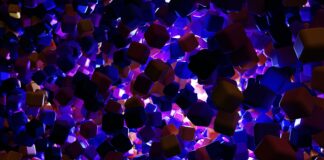Mixed Reality, Mixed Reality, Mixed Reality – these three words represent a fascinating convergence of the physical and digital worlds. In the ever-evolving realm of immersive technologies, Mixed Reality has emerged as a revolutionary concept, blending elements of both virtual reality (VR) and augmented reality (AR). It offers a spectrum of experiences that range from purely physical to entirely digital, allowing users to interact with and manipulate digital objects in a real-world context. In this comprehensive exploration, we will delve deep into the world of Mixed Reality, uncovering its history, underlying technologies, practical applications, and the transformative impact it has on various industries and human experiences.
The Genesis of Mixed Reality
Mixed Reality (MR) finds its roots in the evolution of virtual reality (VR) and augmented reality (AR), two distinct immersive technologies that came before it. While the terms Mixed Reality and its associated concepts have gained widespread recognition in recent years, the ideas and principles behind it have been in development for several decades.
The history of Mixed Reality can be traced back to the 1960s when computer scientists and researchers began to explore the possibilities of overlaying digital information onto the real world. Early experiments and prototypes laid the groundwork for what would eventually become the MR experiences we know today.
The fundamental idea behind Mixed Reality is to create an environment where digital and physical objects coexist and interact seamlessly. In MR, the physical and virtual worlds are not only superimposed but also aware of each other. This awareness allows for dynamic and contextually relevant interactions, bridging the gap between the physical and digital realms.
Understanding Mixed Reality: A Spectrum of Experiences
Mixed Reality is often depicted on a spectrum that encompasses a range of experiences, from purely physical reality to entirely digital immersion. This spectrum includes three key categories: Augmented Reality (AR), Augmented Virtuality (AV), and Virtual Reality (VR).
1. Augmented Reality (AR)
Augmented Reality represents the entry point into the world of Mixed Reality. It involves overlaying digital information onto the real world. Users experience AR through devices like smartphones, tablets, or smart glasses. Popular examples of AR applications include Pokémon GO, where virtual creatures are superimposed onto the real world using a smartphone’s camera, and AR navigation apps that display directions on the screen as users look at their surroundings.
AR enhances the user’s perception of the physical world by adding digital elements, such as 3D objects, text, or graphics. While the digital content is overlaid on the real world, it does not typically interact with or respond to the user’s surroundings. This interaction with the physical world is where the journey into Mixed Reality truly begins.
2. Augmented Virtuality (AV)
Augmented Virtuality represents a more immersive step on the Mixed Reality spectrum. In AV, the digital elements take center stage, and the physical world is integrated into a primarily virtual environment. This approach involves capturing and integrating elements of the real world into a virtual space. An example of AV is the use of a 360-degree camera to capture a real-world environment and then insert virtual objects into that environment.
In AV experiences, the virtual environment becomes the primary context, with the physical world acting as an embedded component. Users can interact with digital objects as if they were part of the virtual environment. AV is particularly relevant in applications like architectural visualization, where users can explore virtual spaces overlaid onto real-world environments, creating a unique and immersive experience.
3. Virtual Reality (VR)
Virtual Reality represents the far end of the Mixed Reality spectrum, where the physical world is entirely replaced by a digital environment. In VR, users are fully immersed in a computer-generated world through headsets and motion-tracking technology. While VR provides the most profound level of immersion, it isolates users from the physical world.
In a VR environment, users can interact with digital objects and surroundings, but these are entirely divorced from the real world. VR is extensively used in gaming, training simulations, medical applications, and even for social interaction in virtual worlds.
Technologies Powering Mixed Reality
Mixed Reality experiences rely on a combination of advanced technologies to seamlessly blend the physical and digital worlds. Some of the key technologies that enable MR include:
1. Sensors and Cameras
Sensors and cameras play a crucial role in Mixed Reality by capturing real-world data and user interactions. Depth-sensing cameras, such as Microsoft’s Kinect and Intel RealSense, enable the detection of objects and users’ movements in physical space. These sensors provide the necessary information to align digital objects with the physical world.
2. Tracking Systems
Tracking systems, including inertial measurement units (IMUs) and optical tracking, are used to monitor the position and orientation of the user and objects in the MR environment. These systems ensure that digital content remains stable and aligned with the user’s perspective as they move within the physical space.
3. Display Technology
Display technology is a critical component of MR devices. Head-mounted displays (HMDs), such as Microsoft HoloLens and Magic Leap, feature transparent lenses or screens that overlay digital content onto the user’s view of the real world. These displays can be see-through, enabling users to maintain situational awareness in their physical environment while interacting with virtual objects.
4. Gesture and Voice Recognition
Gesture recognition technology, coupled with voice recognition, enables natural and intuitive interactions in MR environments. Users can use hand gestures or voice commands to manipulate digital objects, navigate menus, or communicate with the MR system. This technology adds a layer of interactivity and control to MR experiences.
5. Spatial Mapping
Spatial mapping involves the creation of a 3D representation of the user’s physical environment. This mapping allows MR devices to understand the layout of the surroundings, detect obstacles, and accurately position digital objects within the real world. It’s an essential component for ensuring that virtual elements interact seamlessly with physical space.
6. Mixed Reality Software Platforms
To develop and run Mixed Reality applications, software platforms are required. Microsoft’s Windows Mixed Reality platform, for instance, provides tools for developing MR applications that can run on compatible devices. It includes libraries for spatial mapping, gesture recognition, and interaction with the physical world.
Applications of Mixed Reality
Mixed Reality has found applications across various domains, transforming how we work, learn, play, and interact with the world. Here are some of the key application areas of MR:
1. Enterprise and Industry
Mixed Reality has made significant inroads in the enterprise sector, where it is used for training, remote collaboration, and design and visualization. In industries such as manufacturing and construction, MR enhances training and onboarding processes by providing immersive simulations and real-time guidance. Workers can use MR headsets to access remote expertise and collaborate on complex tasks, improving efficiency and safety.
2. Healthcare
MR is revolutionizing healthcare by enabling medical professionals to visualize and interact with complex medical data, such as 3D medical images and patient scans. Surgeons can use MR to superimpose vital information on the patient’s body during surgery, making procedures more precise. It also finds applications in medical training and patient education, where MR can provide interactive 3D models of anatomical structures.
3. Education and Training
Mixed Reality is transforming education by offering immersive learning experiences. In the classroom, teachers can use MR to create interactive lessons where students can explore historical landmarks, interact with 3D models, and understand complex scientific concepts. In corporate training, MR is used for simulations, allowing employees to practice scenarios ranging from customer service to emergency response in a risk-free environment.
4. Gaming and Entertainment
The gaming industry has embraced Mixed Reality to provide gamers with immersive experiences. MR headsets like Microsoft HoloLens and Magic Leap One enable gamers to interact with virtual characters and objects in their real environment. These headsets blend elements of physical and digital gaming, creating unique and engaging experiences.
5. Design and Creativity
MR is becoming an essential tool for designers, architects, and artists. Designers can use MR to create 3D prototypes of products and visualize architectural designs within the physical space. Artists can experiment with digital sculptures and paintings in a real-world context, adding a new dimension to their creative process.
6. Retail and E-commerce
Mixed Reality is making waves in the retail sector by enhancing the shopping experience. Retailers can offer customers the opportunity to virtually try on clothes and accessories or visualize how furniture will look in their homes. This immersive shopping experience can drive consumer engagement and increase sales.
7. Tourism and Cultural Heritage
In the tourism industry, MR offers tourists interactive and informative experiences at historical sites, museums, and cultural landmarks. By wearing MR headsets, visitors can explore virtual reconstructions of historical events, view digital guides, and gain a deeper understanding of the places they visit.
8. Remote Collaboration
Mixed Reality supports remote collaboration by allowing users to interact in a shared virtual environment. Colleagues from different locations can meet in a virtual boardroom, work on projects, and interact as if they were in the same physical space. This technology is particularly valuable in a globalized world where remote work is increasingly common.
Challenges and Future Directions
While Mixed Reality holds immense promise, it is not without its challenges. Addressing these challenges is essential for the technology to reach its full potential:
1. Hardware Limitations
Current MR devices are relatively bulky, expensive, and have limited battery life. The development of more compact, affordable, and power-efficient MR hardware will be crucial for broader adoption.
2. Content Creation
Creating high-quality MR content can be a complex and time-consuming process. Simplifying content creation tools and workflows will enable a wider range of individuals and industries to leverage MR technology effectively.
3. Privacy and Ethical Concerns
The integration of MR into daily life raises privacy concerns. Devices with cameras and sensors can capture personal data, and ethical considerations regarding data collection and usage are paramount. Regulations and safeguards need to be in place to protect user privacy.
4. Interoperability
As MR ecosystems continue to evolve, ensuring interoperability between different hardware and software platforms will be essential. This will enable a more seamless experience for users and developers.
5. Content and Application Diversity
To fully unlock the potential of MR, a diverse range of content and applications is needed. Encouraging developers to create innovative MR experiences across various domains will be critical for the technology’s growth.
6. User Experience and Usability
Creating intuitive and user-friendly MR interfaces is essential. Devices should be comfortable to wear for extended periods, and interaction methods should be natural and easy to learn.
7. Accessibility and Inclusivity
Efforts should be made to ensure that MR technology is accessible to individuals with disabilities. This includes providing features for visually impaired users and those with mobility limitations.
8. Education and Training
Promoting education and training on MR technology is essential to help users and organizations harness its capabilities effectively. Offering resources and courses on MR development and usage will be valuable.
The Future of Mixed Reality
The future of Mixed Reality is brimming with possibilities. As technology continues to advance and the challenges are addressed, we can expect to see several key developments:
1. Integration with Everyday Life
Mixed Reality is poised to become an integral part of everyday life. From education and healthcare to entertainment and shopping, MR will enhance a wide range of human experiences.
2. More Compact and Affordable Devices
Advancements in hardware will lead to smaller, lighter, and more affordable MR headsets and devices, making the technology accessible to a broader audience.
3. Social Interaction and Collaboration
MR will facilitate new forms of social interaction and collaboration. Friends and colleagues from different parts of the world will meet in virtual environments to work, play, and communicate.
4. Enhanced Training and Learning
MR will transform training and education by providing immersive and interactive experiences. Students will explore historical events, conduct virtual science experiments, and practice real-world skills in safe environments.
5. Creative Expression and Design
Artists and designers will push the boundaries of creativity, using MR to create unique, interactive installations and experiences. Architects will design entire buildings within MR spaces.
6. Healthcare Advancements
The healthcare sector will see significant advancements with MR technology. Surgeons will perform more precise procedures, and patients will have access to immersive therapies and treatment options.
7. Cultural Preservation and Tourism
Cultural heritage preservation will benefit from MR, allowing people to explore historical sites and artifacts in detail. The tourism industry will offer enriched experiences at popular destinations.
8. Enhanced Remote Work
As remote work becomes increasingly common, MR will play a pivotal role in enabling more immersive and efficient remote collaboration. Virtual boardrooms will replace traditional conference calls, and remote employees will have a stronger sense of presence.
Conclusion
Mixed Reality is a technological frontier that bridges the gap between the physical and digital worlds. It offers a new way of interacting with information, objects, and environments, transforming industries and human experiences. As MR devices become more compact, affordable, and accessible, they will find their way into everyday life, offering new ways of learning, creating, communicating, and exploring.
The journey of Mixed Reality has just begun, and its future holds untold possibilities. With the ongoing development of hardware, content, and user experiences, MR has the potential to redefine the way we perceive and interact with the world. From training surgeons to preserving cultural heritage, from enhancing gaming experiences to enabling remote collaboration, Mixed Reality is set to shape the future in ways we can only imagine.
As we navigate this exciting frontier, it is essential to address challenges related to privacy, accessibility, and usability while fostering innovation and collaboration among developers, researchers, and industries. Mixed Reality is not just a technology; it is a transformative force that has the power to enrich our lives and empower us to explore uncharted territories in the digital and physical realms.














